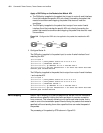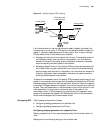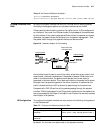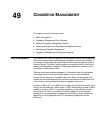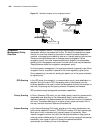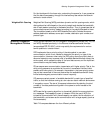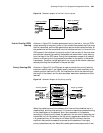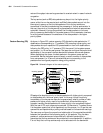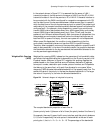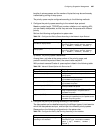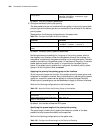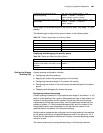
682 CHAPTER 49: CONGESTION MANAGEMENT
Table 719 Comparison of Several Congestion Management Policies
Operating Principle of
the Congestion
Management Policies
For congestion management, queuing technology is used. When congestion
occurs, the data packet is queued at the router by a policy. When dispatching, the
order for sending the data packet is decided by the policy.
Number of
queues
Advantage Disadvantage
FIFO 1 1. It does not need to be
configured and is easy to use.
2. The processing is simple with
small delay.
1. No matter how urgent they are,
all the packets, voice or data, will
enter the FIFO (First In, First Out)
queue. The bandwidth used for
sending packets, delay time, drop
rate are decided by the arrival
sequence of the packets.
2. It has no restriction on the
uncoordinated data sources (such as
the packet transmission of UDP), and
the unmatched data sources will
cause the damage of the
coordinated data source bandwidth
(such as the TCP packet
transmission).
3. The delay of the real time
application sensitive to time (such as
VolP) cannot be guaranteed.
PQ 4 The absolute priority can be
provided to various service data,
and the delay of the real time
application sensitive to time
(such as VolP) can be
guaranteed. The bandwidth
occupation of the packet with
the priority service may have the
absolute priority.
1. It needs to be configured, and the
processing speed is slow.
2. If the bandwidth of the packet
with high priority is not restricted, it
will cause that the packet with low
priority cannot obtain the
bandwidth.
CQ 1 1. The packets of various services
may be allocated with the
bandwidths based on the
bandwidth proportion.
2. When there is no packet, the
available bandwidth occupied by
the existing types of packets can
be automatically increased.
It needs to be configured, and the
processing speed is slow.
WFQ It is decided
by users
(256 by
default)
1. It is easily configured.
2. The bandwidth of the
coordinated (interactive) data
source (such as the TCP packet
transmission) can be protected.
3. The delayed jitter can be
reduced.
4. The small packet has priority.
5. The flows with various priority
levels may be allocated with
different bandwidths.
6. When the traffic is reduced,
the available bandwidth
occupied by the existing flows
may be automatically increased.
The processing speed is slower than
FIFO.



